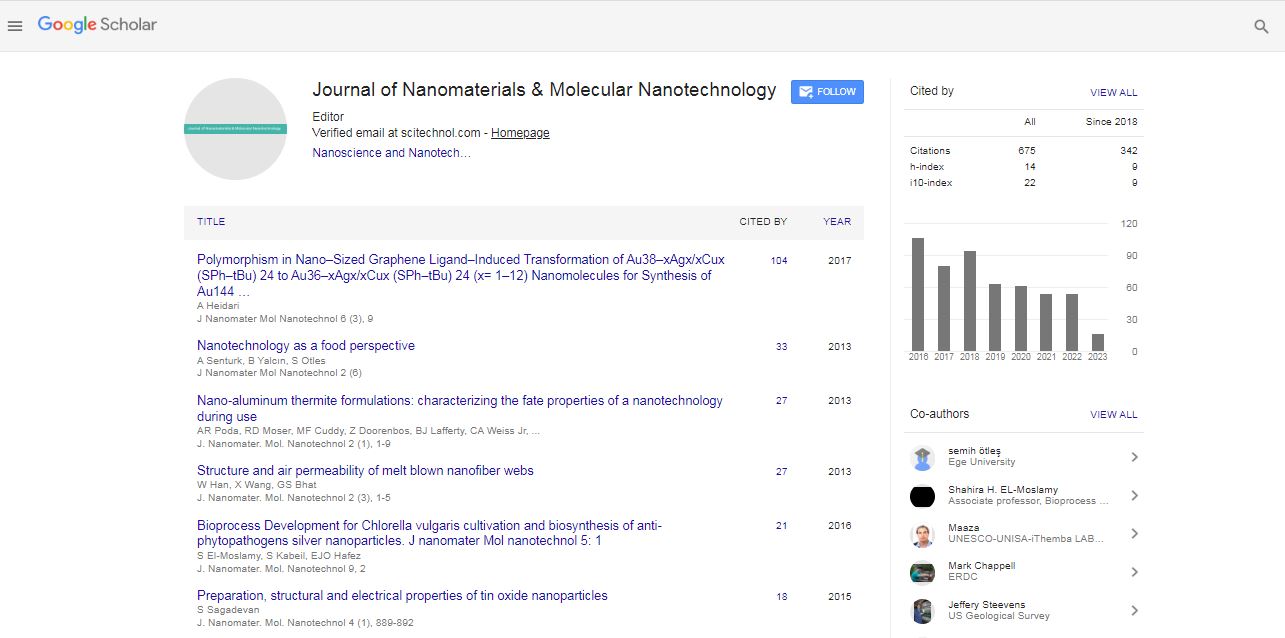Graphene as an electrode for nano organic transistors
Antonio Cassinese
Physics department and Università di Napoli Federico II, Italy
: J Nanomater Mol Nanotechnol
Abstract
In this contribution we report the fabrication and electrical characterization of n-type organic thin film field effect transistors (OTFT) exploiting the use of graphene as Source and Drain electrodes for devices characterized by nano channel lengths. In particular, a bottom-contact/bottom-gate FET configuration has been employed as test pattern. CVD-grown graphene, transferred on the Si/SiO2 (300nm) substrate, has been used as Source and Drain electrode through electron-beam lithography nano-pattering, obtaining channel lengths (L) between 150 nm and 1um, for a fixed channel width (2um). A 25 nm thin film of a highly performing derivative of Perylene-3,4,9,10-tetracarboxylic acid diimide, also known as PDIF-CN2, is used as electron-transporting organic semiconductor, evaporated by means of Organic Molecular Beam Deposition (OMBD). The comparison between the electrical characterization of graphene based and gold based nano-devices with an analogous architecture clearly shows that the latter are affected by the well-know Drain-induced barrier lowering for ultra-short channel FET (L<400 nm). Such effect hinders the charge to be blocked by the energy barrier at the electrode/Channel interface also in depletion mode, resulting in high “off” currents and poor field-effect modulation of the channel currents. On the contrary, devices with graphene electrodes are characterized by remarkable On/Off ratios (as high as 800 even for ultra-short channel devices) that are slightly influenced by L and by the applied drain-source bias. Experimental result indicate that graphene, and in particular its morphological and electrical peculiarities, is an excellent candidate for nano miniaturization of organic field effect devices for practical applications.
 Spanish
Spanish  Chinese
Chinese  Russian
Russian  German
German  French
French  Japanese
Japanese  Portuguese
Portuguese  Hindi
Hindi 



